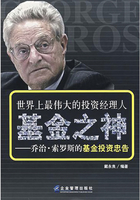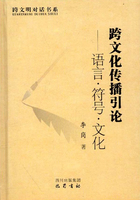The newest sensation at the center of Hollywood’s fashion scene isn’t a famous designer or starlet. It’s a 56-year-old homeless man who spends his days dancing on roller skates.
John Wesley Jermyn has been a fixture in West Los Angeles for more than 20 years. Nicknamed“The Crazy Robertson”and“The Robertson Dancer,”he is a constant presence on a stretch of Robertson Boulevard that has become the city’s trendiest shopping corridor and a prime strolling spot for tourists and movie stars. Among locals and online, there’s much speculation about Mr. Jermyn’s personal history, including one oft-repeated rumor that he’s a secretive millionaire.
In a plot twist worthy of Tinseltown, Mr. Jermyn now has a clothing label named after him. Since it was introduced last month,‘The Crazy Robertson’brand of T-shirts and sweatshirts, created by a trio of 23-year-olds, has flown off the shelves at Kitson, a haunt of tabloid stars like Paris Hilton. The clothes feature stylized images of Mr. Jermyn, including one design—available on a $98 hoodie—that has a graphic of him dancing and the phrase‘No Money, No Problems’on the back. At the largest of Kitson’s three boutiques on Robertson, shirts bearing Mr. Jermyn’s likeness are sold alongside $290‘Victoria Beckham’jeans and $50 baby shoes designed by pop star Gwen Stefani.
The label’s owners, who grew up in Beverly Hills, have created a MySpace page for Mr. Jermyn. It doubles as an ad for the clothing brand and their nightclub-promotion venture, which is also named“The Crazy Robertson.”The young entrepreneurs spent months trying to forge a relationship with Mr. Jermyn—who now goes by the name John Jermien—before gaining his approval. They have consulted him on design decisions and had a photographer shoot him for publicity images.
In May, Mr. Jermyn agreed to a deal that entitles him to 5% of“net profit’ from clothing sales, according to a copy of the contract seen by The Wall Street Journal. He signed the contract, without speaking to an attorney or family members. But so far he has refused to accept much cash, preferring to be paid in food, liquor and paper for his art projects, according to Teddy Hirsh, one of the label’s founders.“He tries not to involve money in his daily life,”says Mr. Hirsh, who says he is Mr. Jermyn’s agent and manager for future endeavors.
Mr. Hirsh says Mr. Jermyn has already received several small payments, even though the company hasn’t“made much profit”so far.“We haven’t collected anything for ourselves,”says Mr. Hirsh.
Mr. Jermyn’s slide into homelessness is a painful subject for his sister Beverly. And so is the clothing deal. She believes“The Crazy Robertson’ founders are exploiting her brother’s condition to build their brand. I think these guys saw an opportunity and they took it,”she says.“I am not happy with the arrangement.”
Ms. Jermyn, who lives close to the alley where Mr. Jermyn sleeps, says her brother has a form of schizophrenia. He refuses to take medication, she says, despite suffering from fits of shouting and cursing. In the years since his condition began deteriorating in the late 1970s,“he slipped through my fingers like sand,”says Ms. Jermyn, 64, who manages facilities for Oracle Corp.
In the late 1980s she testified in court in a proceeding to force her brother to seek help, but psychological evaluators found him“lucid and gracious,”according to Ms. Jermyn. She has made countless attempts to provide him with shelter and therapy, and she still visits him twice a week with food. She also pays for his cellphone and collects his Social Security checks on his behalf.
The repackaging of Mr. Jermyn as a fashion front man comes at a time of increased fascination with homelessness. The producers of“Bumfights”— a collection of videotaped street battles between vagrants — claim to have sold more than 300,000 DVDs since 2002, and a British TV series called“Filthy Rich and Homeless”made headlines this year for its depiction of real-life millionaires posing as London beggars.
Across the U.S., a growing number of homeless people have gained attention through the Internet. More than 17,500 videos on YouTube are tagged with the word“homeless.”Leslie Cochran, a street resident in Austin, Texas, who has twice run for mayor, has 10,775“friends”on his MySpace page. In Boston, the profile of Harold Madison Jr. — a homeless man better known as“Mr. Butch”— rose through online clips and a Web site made in his honor.
Mr. Jermyn was raised in Hancock Park, a historic L.A. neighborhood that’s home to some of the city’s wealthiest families. His father managed one of L.A.’s largest Chevrolet dealerships.
A star athlete in high school, Mr. Jermyn was selected by the Kansas City Royals in the 1969 Major League Baseball draft. He attended Pepperdine University and played a season for a Los Angeles Dodgers’minor-league team in Bellingham, Wash. (He hit just .205 and made 12 errors in 63 games, according to the Society for American Baseball Research.)
Joel John Roberts, chief executive of People Assisting the Homeless, which provides shelters for L.A.’s street residents, says the branding of Mr. Jermyn is“like designing a line of clothing patterned after Iraqi refugees fleeing the war.”
Mr. Hirsh and Vic Ackerman, one of the other founders of the clothing line, are sensitive to Ms. Jermyn’s concerns about her brother, but say Mr. Jermyn“specifically asked”them not to contact her about the clothing line or the contract. They view Mr. Jermyn as a“business partner”and say they make sure he’s aware of how his image is being used.
第一章 The Best Poses for Women (8)
“He knows everything that’s going on,”says Mr. Ackerman, noting that Mr. Jermyn nixed a set of promotional photos because he didn’t like his outfit and thought he“looked a little puffy.”















